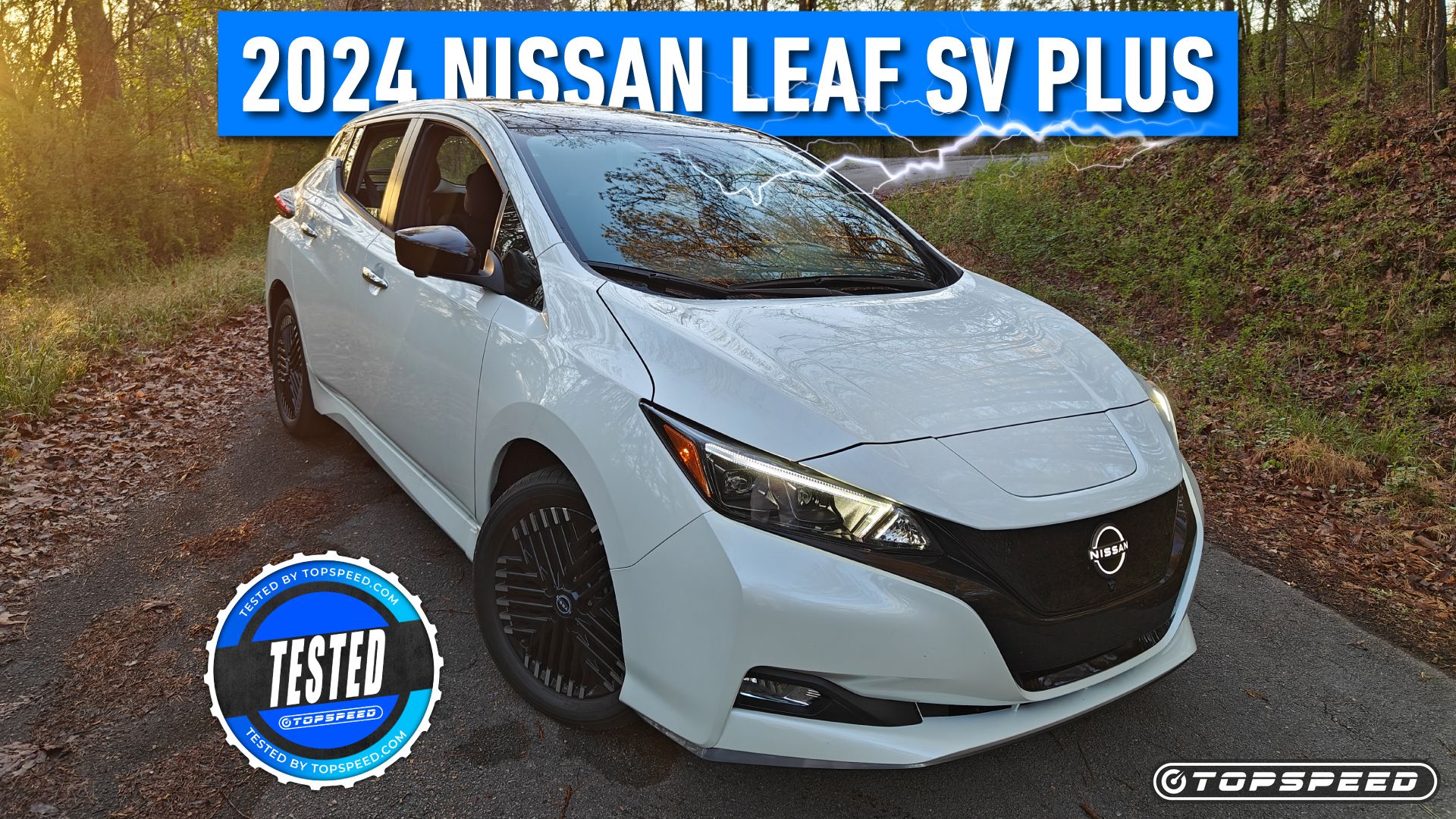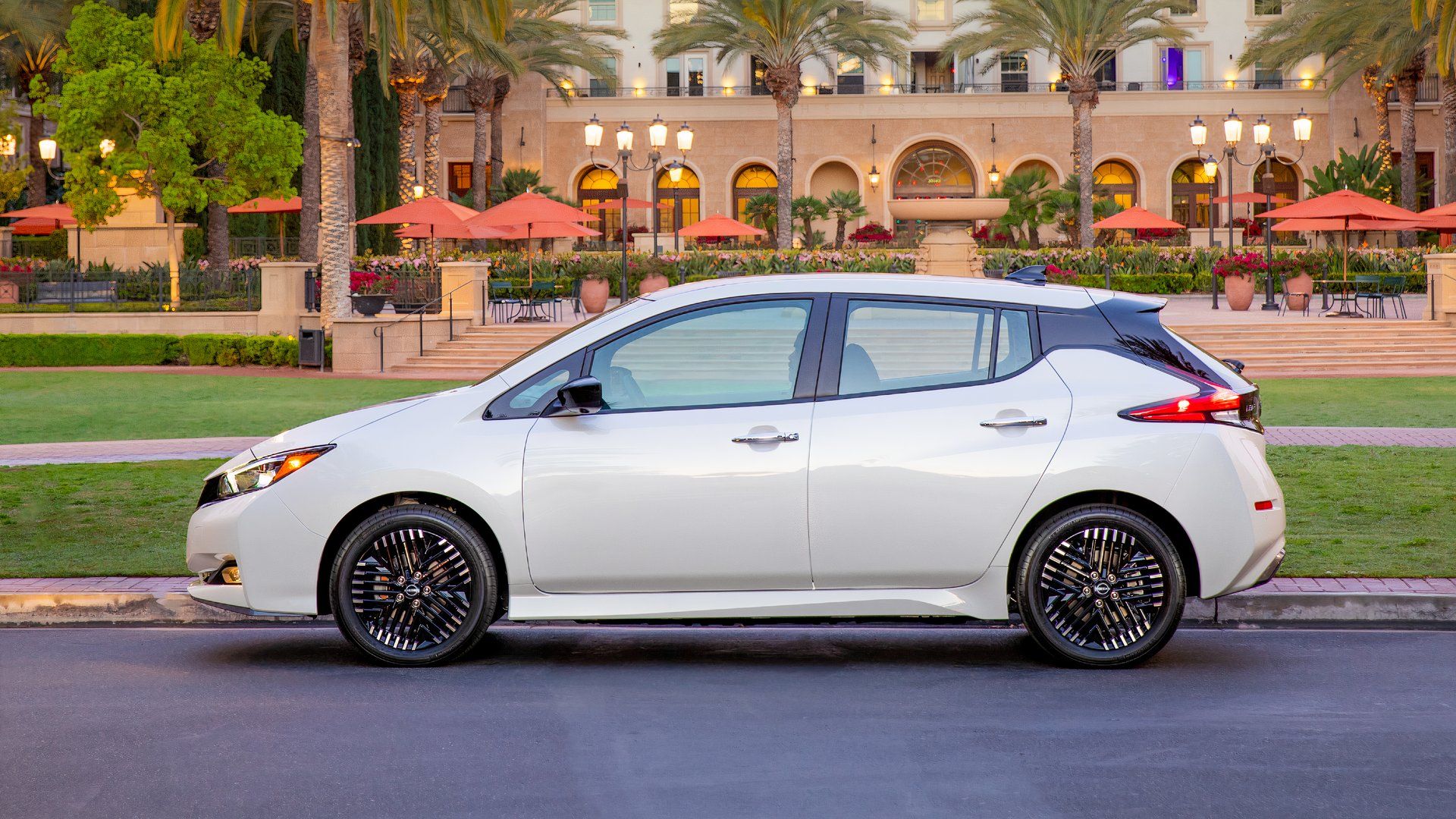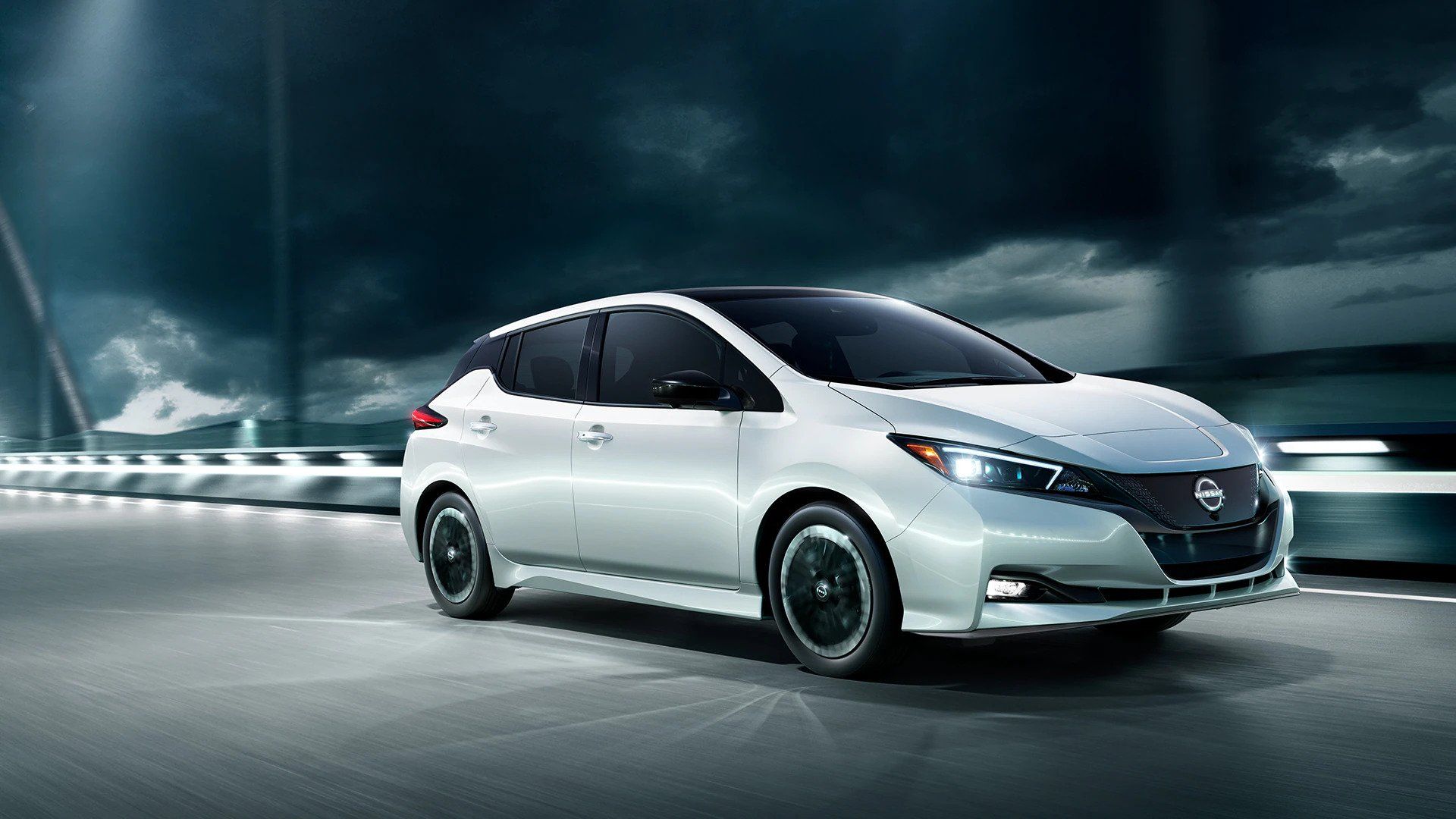There are now almost as many electric vehicle (EV) models as gas-powered ones. That makes finding an affordable, all-electric vehicle easier than ever; whether you’re looking for something to get you around town, a small SUV, or even a pickup truck, there are plenty of options. Performance junkies have a plethora of choices that offer mind-bending performance capable of laying waste to many so-called supercars.
Better still, as the list of EVs continues to grow, EV technology continues to evolve. Electric motors are increasingly more powerful and efficient, batteries provide more range, and charging times have dropped to as low as 20 minutes. With those improvements, the cost of EVs now falls in the range of their gasoline counterparts.
When crunching the numbers, the cost of EV ownership can be cheaper than owning a traditional vehicle, thanks to tax incentives, lower maintenance costs, and the ability to charge batteries for a fraction of the cost of a tank of gas. These advantages are part of what makes a Tesla a compelling option. However, while a Tesla may be cheaper to own and operate compared to a comparable vehicle, it is not the least costly EV to own. In fact, over a five-year period, one vehicle stands out.
In order to give you the most up-to-date and accurate information possible, the data used to compile this article was sourced from Nissan and other authoritative sources, including Edmunds.com, and fueleconomy.gov.

Review
2024 Nissan Leaf: An Overlooked Electric Vehicle Perfect For First-Time EV Buyers
The Nissan Leaf has matured into a practical and reliable option for urban commuters seeking an environmentally friendly mode of transportation.
The Nissan Leaf: An Affordable EV Option
Here’s How The Nissan Leaf Shines:
The Nissan Leaf is a compact hatchback that provides an accessible entry point into the EV market. It’s not the fastest EV or the one with the most range. It won’t win a towing competition or wow the neighbors with radical styling. But as a whole, it’s greater than the sum of its parts with its practicality and low cost. Used or new, it appeals to a broad range of drivers seeking an economical electric vehicle.
Think of the Leaf as the EV version of the Nissan Versa. Despite their different powertrains, both are good cars built to be affordable and economical rather than something to impress the neighbors. The Leaf is the kind of vehicle people buy when they want solid, reliable transportation, a means to get around rather than make a statement.
2025 Nissan Leaf Specifications
|
Nissan Leaf S |
Nissan Leaf SV Plus |
|
|
Base Price |
$28,140 |
$36,190 |
|
Battery |
40 kWh |
60 kWh |
|
EPA Range |
149 miles |
212 miles |
|
Horsepower |
147 |
214 |
|
Torque |
236 lb-ft |
250 lb-ft |
|
Wheels |
16-inch steel |
17-inch aluminum-alloy |
Both trim levels come equipped with a 6.6 kW onboard charger and a Quick Charge port, supporting CHAdeMO connections for faster charging and features like cruise control and Apple CarPlay integration. However, the SV Plus adds a larger battery with more range and performance. Additionally, it comes standard with 17-inch aluminum alloy wheels, a larger infotainment screen, heated front seats, and Nissan’s ProPILOT assist suite of driver safety features.

Related
12 Cheapest EVs In 2025: Budget-Friendly Electric Vehicle Prices
It shouldn’t cost an arm and a leg to go green, and thanks to these affordable options, it doesn’t anymore.
Five-Year Ownership Cost Analysis
Affordable In The Short And Long Term
According to a 2024 analysis, the Nissan Leaf S 4D Hatchback has a total ownership cost of approximately $46,916 over five years. This figure encompasses various expenses, including depreciation, maintenance, insurance, and fuel (electricity) costs, which are broken down as follows:
|
MSRP |
$29,225 |
|
Fuel |
$2,965 |
|
State Fees |
$2,378 |
|
Depreciation Cost Over 5 Years |
$20,171 |
|
Financing |
$4,452 |
|
Repairs |
$1,724 |
Several key factors contribute to the Leaf’s low ownership costs, including:
- Depreciation: Despite its five-year depreciation rate of 69%, the Leaf’s market positioning and pricing strategy helps mitigate the cost compared to other EVs.
- Maintenance: As an electric vehicle, the Leaf benefits from lower maintenance requirements due to fewer moving parts and no need for oil changes, timing belt replacements, or other services required by gas-powered vehicles. Add to that the Leaf’s reputation for reliability, and you’ve got a vehicle that won’t nickel and dime you with unexpected repairs.
- Fuel Costs: The Leaf’s electric powertrain’s efficiency reduces energy expenses over time. Additionally, its charging costs are significantly lower than filling the tank on a comparable gas-powered vehicle.
Despite these advantages, the Nissan Leaf gets overlooked in the EV market. There are newer, more exciting models from companies like Hyundai or Kia, but the Leaf still makes an ideal vehicle for first-time EV buyers. Its practical layout and low operating costs are ideal for urban commuters who want an inexpensive and environmentally friendly vehicle.
Performance And Efficiency You Can Bet On
Impressive City And Highway Driving
The standard S model is equipped with a 147-horsepower electric motor and a 40.0-kWh battery pack, while the Leaf SV Plus gets an upgraded 214-hp electric motor and a larger 62.0-kWh battery. Both models’ horsepower ratings are middling compared to many gas-powered vehicles, but the Leaf is a delight to drive thanks to its abundance of torque. With either 236 or 250 lb-ft of torque available immediately, the Leaf can squirt through traffic with surprising urgency. There’s no need to wait for a turbo to spool up or the transmission to kick down a gear – just flex your right foot and the response is immediate.
Another benefit to many EVs, including the Leaf, is the ability to recharge the battery while braking. Using the Leaf’s e-Pedal, the driver can select between braking modes to allow the car to coast or slow and recharge the battery just by lifting off the gas pedal. This feature is not as abrupt as it is on some other EVs, allowing people unfamiliar with this feature to quickly adapt to a one-pedal driving style.
Jack Of All Trades
If there is one area the Leaf lags compared to other EVs, it’s outright acceleration. People seeking an EV that accelerates to 60 mph in under 4.0 seconds will be disappointed by the Leaf’s low to mid-7-second time. But then, the Leaf is not about outright acceleration but all-around versatility on a budget. It is equally adept at city or highway commuting, running errands, hauling kids to playdates or afterschool activities, or taking three coworkers to lunch. It works well as an everyday EV and is not just a statement about your green cred.
Efficiency is the name of the game, and to that end, the Leaf has an EPA estimated fuel economy rating of 114 MPGe city and 94 MGPe highway. Those numbers are good enough to give it upwards of 149 miles of range for the S model or 212 miles for the SV Plus. That range is 30-percent less than what a base Tesla Model 3 is capable of, but then the Leaf costs about 30-percent less than the Model 3 as well.

Related
The Affordable EV That’s Redefining Value For Money
With over 300 miles of range, 200+ horsepower, and impressive tech features, this sub-$35,000 EV shows you can get a lot of car for the money spent.
The Nissan Leaf Is An All-Around Winner
 Why The Nissan Leaf Stands Out
Why The Nissan Leaf Stands Out
Since 2011, the Nissan Leaf has provided an affordable and efficient alternative to traditional gas-powered cars. It continues to impress with its cost-effectiveness, environmental benefits, and urban-friendly design. Unlike many EVs that carry premium price tags, the Nissan Leaf remains one of the most budget-friendly electric vehicles on the market. With a starting price of around $28,140, the Leaf is accessible to a broad range of consumers, making it an excellent entry-level EV for those transitioning from gasoline-powered vehicles.
In addition to its affordable sticker price, the Leaf boasts low ownership costs. With fewer moving parts than traditional gas-powered vehicles, the Leaf requires less maintenance, eliminating expenses like oil changes, timing belts, and exhaust system repairs. Its battery and electric motor design make long-term upkeep more straightforward and less costly.
Fuel savings also add to its appeal. Charging the Leaf costs significantly less than refueling a gas-powered car, with electricity rates generally more stable than fluctuating gas prices. Many owners can take advantage of off-peak charging discounts at home, making their daily driving even more economical. One of the Leaf’s most significant advantages as a fully electric vehicle is that it produces zero tailpipe emissions. This reduces greenhouse gas pollution and significantly lowers the vehicle’s carbon footprint. Beyond emissions, the Leaf also reduces overall energy consumption. Thanks to its 94 to 114 MPGe rating, it is more efficient than a gas-powered vehicle, which means the Leaf goes farther with less energy use.
A Well-Rounded EV for Every Driver
Cost and environmental friendliness aside, the Nissan Leaf is a well-rounded EV for every driver. Designed as a compact hatchback, it excels in city driving and daily commutes. Its small footprint makes it easy to maneuver through tight spaces and park in urban areas, where parking spots can be limited. The instant torque from its electric motor allows for quick acceleration while running virtually silent. This propulsion makes stop-and-go traffic less of a hassle by offering a quieter and smoother driving experience, reducing noise pollution, and eliminating the gas-engine drone on the highway.
So, while there are faster, more powerful EVs out there, ones that look exotic or futuristic and include technology that lets them practically drive themselves, the Leaf remains relevant because it isn’t one of those things. Instead, it is a well-rounded mode of economical transportation that offers a healthy dose of practicality, all of which meets the needs of a wide variety of drivers.















